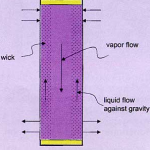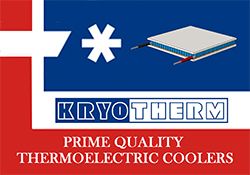Two days ago on our blog we covered a heat pipe specially designed for COM Express processor boards. In thinking about that article today, we thought our readers might appreciate a little “back to basics” about heat pipes used for liquid cooling.
It comes as no surprise to our readers that with the ever-increasing power densities in electronics, the use of heat pipes in thermal management is increasing. Heat pipes are attractive because they can typically carry 100 or more times as much heat as an equivalent piece of solid copper.
In our coolingZONE Library we have a complete set of articles (available for free, no registration required) on heat pipes. The basic principle of heat pipe operation is very simple. A small amount of working fluid, typically water, is sealed inside a closed tube, Figure 1, which is equipped with a wick material that can transport the liquid by capillary action even against gravity. The wick can be made of metal powder, fine screen, or simply grooves cut on the inner surface of the tube. If one end of the tube is heated, evaporation of the liquid increases the pressure there and causes vapor movement to the other end where it condenses, effectively transporting heat at the rate P:
P=Ldm/dt (1)
where L is the heat of vaporization per unit mass and dm/dt is the mass evaporation rate. The condensed fluid is carried back to the evaporation section by the wick to continue the cycle. (1) Dunn, P.D. and Reay, D.A., Heat Pipes, 3rd Edition, Pergamon Press, 1982.
But there’s a bit more to heat pipes than just a simple introduction and here’s where the coolingZONE Library can help, please check these articles, you’ll round out your heat pipe education and be better able to use them in your next project:
- Heat Pipe Fundamentals
- Heat Pipes for Electronics Cooling Applications
- A system level cooling solution using micro heat pipes




